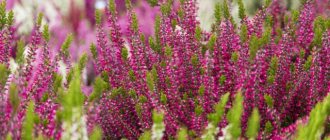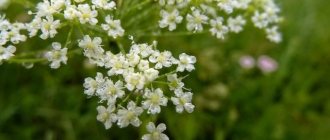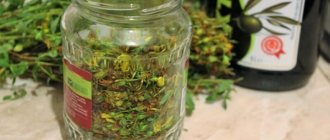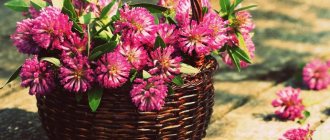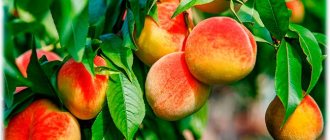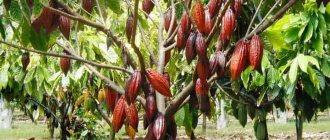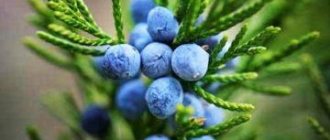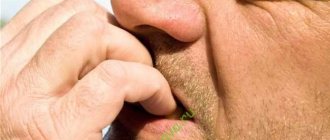Probably few people know this, but bird cherry is extremely useful for treating various diseases, and its smell helps get rid of ticks. The thing is that the flowers and leaves of this plant contain a huge amount of substances that have antimicrobial, antibacterial and antiparasitic properties. And even a bouquet of several bird cherry branches will help clean the air in the apartment and destroy harmful microbes.
general characteristics
Bird cherry is a deciduous, fast-growing tree from the rose family that can reach 8-15 m in height. Blooms in May, bears fruit from July to August. Bird cherry berries are small (the size of a pea), usually astringent-sweet. Hidden inside each fruit is an inedible, bitter seed. But not only is it bitter, it also has toxic properties.
Content:
- general characteristics
- Beneficial features
- Use in folk medicine
- How to prepare correctly
- How to prepare a medicinal decoction and tincture
- Warning
- What else is useful
This tree is very common in Europe, Northern Asia and North Africa. Within Europe, bird cherry grows from the northern part of Scandinavia, starting from the shores of the Arctic Ocean, and all the way to Italy, Spain and Portugal. Although, it must be said, in the coastal region of the Mediterranean and in the west of France, you most likely will not be able to see bird cherry. But this tree with its delicate aroma pleases the inhabitants of Ireland, England, Croatia, Bulgaria, the northern part of Russia, the Caucasus, Western Siberia and even the Himalayas. This culture is also found in North America, in particular in Alaska and in some northeastern regions of the USA and eastern Canada. Bird cherry's favorite places are the banks of streams, wet forests, usually with alkaline soil, although the culture can often be seen on the acidic soils of mountainous regions.
And although the most famous is the common bird cherry, there are many other varieties of this crop, each of which also has certain advantages. For example, white bird cherry is an excellent “raw material” for honey. By the way, this type of honey is known as an excellent source of iron, manganese, zinc, copper, cobalt, vitamins C, and. Bird cherry is used in folk medicine to treat the respiratory system. Red bird cherry, which has anti-inflammatory and bactericidal properties, is no less useful. The berries of this variety are considered useful for treating the digestive organs, as well as bronchitis.
Beneficial features
Scientific research indicates that dark bird cherry berries are rich in powerful antioxidants, which makes the fruit incredibly beneficial for humans. It is known that bird cherry berries contain a huge amount of anthocyanins, the concentration of which even exceeds the content of these substances in cranberries. The phytoncides contained in the plant give it antimicrobial, diuretic and choleretic properties.
Fruits and leaves contain organic acids, in particular malic and citric, glycosides, tannins, vitamins E, , C and P, and essential oils. A high concentration of tannins was found in the tree bark, which makes it useful for preparing medicinal decoctions and tinctures against inflammation. By the way, herbalists use a decoction of the bark to treat conjunctivitis, and alcohol tinctures to treat radiculitis. The bark and leaves of the plant also contain hydrocyanic acid and benzoaldehyde.
And one more interesting fact. The rich composition of organic acids in different parts of bird cherry makes this culture useful for restoring the correct acid-base balance in the human body.
Research indicates that bird cherry:
- has astringent properties;
- regulates intestinal function;
- improves stomach functionality;
- reduces blood cholesterol;
- has anti-inflammatory properties;
- strengthens capillaries;
- stimulates the immune system;
- has bactericidal properties;
- is a diuretic and diaphoretic;
- removes metal salts from the body;
- prevents gout, arthritis, rheumatism.
Chemical composition of bird cherry
The shrub or tree belongs to the Rosaceae family. The height of bird cherry can reach 30 m. Usually the trunk is somewhat curved. The bark is distinguished by a dark gray color. There are also rusty-brown spots on the trunk.
The oval or oblong leaves have a pointed tip. The bottom of the plates is matte, and the top is shiny. In autumn, the leaves have a yellow or red tint. Young plates are usually golden-green in color. Old leaves are duller. Fragrant white flowers are collected in a brush. The bird cherry crown is thick and wide. Hanging branches are erect.
The flowering period is short and lasts from late May to early June. It depends on the type of tree. The length of the flowing inflorescences can reach 12 cm. They differ in the following shades:
- red;
- pink;
- white.
Bird cherry is called the orderly of the forest. Leaf plates and flowers contain phytoncides that can destroy pathogenic microorganisms and certain types of insects.
Bird cherry prefers fertile soils with excess flowing moisture, mountainous areas
There are several legends explaining the appearance of the tree. According to one of them, the bush grew from the cold heart of an unrequited girl in love. The ancient Slavs considered bird cherry a sacred plant. The name is associated with the Old Russian word “cherma”, which is translated as “swarthy”. Indeed, the tree trunk is dark in color.
The first officially recorded mentions of bird cherry date back to the 15th century. Currently there are about 20 species of shrubs. Bird cherry grows in the following areas:
- North and South America;
- Eurasia.
The raw materials of the plant are good for health. Parts of the bush are rich in:
- tannins;
- essential oils;
- glycosides;
- hydrocarbon cyanide;
- benzoaldehyde;
- vitamins, for example, nicotinic and ascorbic acid, tocopherol;
- minerals, in particular calcium and magnesium, potassium, cobalt, iron, zinc and manganese.
Why does bird cherry knit?
The berries have a specific taste due to their tannin content. They are good for health. The presence of an astringent effect indicates the possibility of consuming bird cherry bunches for diseases of the digestive system. Black berries are effective against diarrhea.
Calorie content of bird cherry
The fruits are widely used in cooking. Dishes made from bird cherry are healthy due to their rich chemical composition. The berries are made from:
- pies, cakes, buns and muffins;
- jam;
- syrups and compotes, tinctures.
Bird cherry flour retains the healthy properties of the fruit. It is used to make ointments, decoctions and infusions.
Important! The calorie content of berries is 46 kcal per 100 g of product.
Use in folk medicine
Bird cherry has been used since ancient times in different countries as a medicine. For example, North American Indian tribes used it to treat the respiratory system. The bark of the plant was used to improve appetite, as an astringent, to speed up blood circulation, and also as a sedative. In folk medicine, bird cherry tinctures were used to treat fever, cough, and colds, and ulcers, wounds, and burns were washed with decoctions from the roots of the tree. Bird cherry berries and bark are known in herbal medicine for their ability to relieve abdominal pain and reduce bleeding, including after childbirth. Decoctions from different parts of bird cherry are useful for heavy and painful menstruation, liver and eye diseases.
Folk and traditional medicine resorts to preparations based on bird cherry to achieve a sedative and tonic effect for diseases of the stomach, pancreas, intestines, as well as for heart pain.
Benefits of berries
Tincture of bird cherry berries has pronounced antiseptic properties, which makes it useful for the treatment of sore throat, stomatitis, and caries. The benefits of the berries of this crop are also noticeable in the treatment of inflammatory processes, including in the organs of the female reproductive system. And douching with a decoction is useful for genital infections.
The benefits of berries for the digestive system are also known. A decoction of the fruit, rich in ascorbic acid, some minerals and organic acids, is an effective medicine against diarrhea, intestinal infections and indigestion. Also, some herbalists advise drinking sweet compote from bird cherry berries as a sedative and as a stimulant of male potency. In addition, bird cherry berries have analgesic properties. And this ability has made them a folk remedy for toothache. It is enough to apply a few berries to the tooth to relieve pain.
Since ancient times, folk healers advised taking fresh juice of bird cherry berries with honey (a teaspoon per half glass of juice) to strengthen the immune system and normalize metabolism. An unsweetened decoction of the berries was used to treat infections in the gastrointestinal tract and scurvy.
Benefits of leaves and bark
Everyone knows that plantain should be applied to the site of a bruise. But few people know that bird cherry leaves have a similar effect - they relieve pain and reduce swelling. Bird cherry leaves can also be used to treat respiratory diseases and some disorders of the cardiovascular system. This part of the bird cherry contains rich reserves of flavonoids, which have a beneficial effect on the capillaries, and therefore on the entire circulatory system. The greens of this tree are suitable for preparing infusions and decoctions.
A decoction of the bark has a powerful diuretic effect, which makes it useful for various disorders of the urinary system and nephritis. But excessive use of decoctions or infusions of bird cherry bark can cause diarrhea and pain in the digestive organs.
Bird cherry bark has analgesic, diuretic, antipyretic and sedative properties. Infusions from it are used to treat colds and fever. In addition, our ancestors used bird cherry decoctions as a remedy against lice.
In folk medicine, teas and alcoholic tinctures from young bird cherry branches are used to treat rheumatism, dermatosis, furunculosis, gout, diarrhea, periodontal disease, and caries.
Bird cherry color: dangerous and beneficial properties
White bird cherry flowers, oddly enough, can be both beneficial and harmful at the same time. Flowering bird cherry is a source of some essential oils that act as sedatives on humans. But at the same time, during the flowering period, bird cherry secretes amygdalin, which in the air breaks down into small particles, including hydrocyanic acid, which in large portions can cause serious poisoning. It should also be remembered that a large amount of phytoncides contained in flowers can cause dizziness or an allergy to the aroma of bird cherry.
In addition, a healing decoction of fragrant flowers was used in ancient times as one of the most effective means for washing and healing wounds and ulcers. This remedy was used to treat conjunctivitis and, they say, even stopped the development of gangrene.
Bird cherry flowers are also useful for normalizing metabolism. To improve metabolism, it is recommended to prepare a remedy from dried flowers. To do this, pour 1 tablespoon of dried flowers with a glass of boiling water and leave for half an hour. After this, strain and take a tablespoon three times a day before meals.
Treatment of toothache
Regular rinsing of the mouth with a rich decoction of tree bark will help get rid of severe toothache, eliminate inflammation, and remove unpleasant odor. Step-by-step folk recipe:
- Chop the main component (25 g) into a fine paste.
- Pour boiling water (a glass is enough), boil for 5 minutes.
- Leave until cool, strain.
Article for you:
Beneficial properties of ant tree bark and contraindications
Rinse your mouth up to five times a day. For severe toothache, soak a cotton swab with warm liquid, place it on the painful area, and leave until the pain disappears.
How to prepare correctly
Best materials of the month
- Coronaviruses: SARS-CoV-2 (COVID-19)
- Antibiotics for the prevention and treatment of COVID-19: how effective are they?
- The most common "office" diseases
- Does vodka kill coronavirus?
- How to stay alive on our roads?
As is already clear, different parts of the tree are used as a remedy: flowers, leaves, berries and even bark. But in order for raw materials to retain their healing properties, one must be able to prepare them correctly. For example, it is most useful to harvest bark in early spring (the main thing is to have time to collect the bark before the tree begins to flower, at this time it contains the maximum possible amount of useful substances), flowers - as soon as they open, berries are only suitable when they are completely ripe, and leaves are collected in June. Herbalists advise harvesting bird cherry only in dry weather, moreover, either in the early morning or in the late afternoon. But only bird cherry that grows in ecologically clean regions, away from industrial zones and roads, is suitable as a medicinal raw material.
Flowers, bark and leaves are dried in the open air, but in a place protected from direct sun. Start drying the fruits no later than 4 hours after picking, before they begin to deteriorate. And an electric dryer or oven is best suited for this purpose (but the temperature should not exceed 50 degrees). Well-dried berries and bark can be stored for up to 5 years, flowers and leaves for a year.
How to prepare a medicinal decoction and tincture
A decoction of the berries, leaves or bark of bird cherry preserves almost all the healing properties of this crop. To prepare a decoction, you can use a mixture of different parts of the plant or take them separately.
Berries for medicinal use are collected during July-August. A decoction of them is prepared in a ratio of 1:10. For each glass of fresh berries, take 10 glasses of boiling water. Prepare the decoction over low heat for no longer than 20 minutes, then leave for at least another 2 hours.
To prepare an alcohol tincture you will need 50 g of bird cherry bark and a glass of vodka. After infusion for 2-3 weeks, the product can be used to disinfect wounds and to rub sore joints and back. To treat stomach disorders, it is good to drink tincture of bird cherry berries. This medicine is prepared from 150 g of berries and 500 ml of vodka, infused for 2 weeks. The finished product is taken for digestive disorders, 5 drops three times a day before meals.
Warning
Bird cherry seeds and leaves contain hydrocyanic acid, which is a strong poison in large quantities. It is this substance that gives the plant its bitter taste. But eating berries in adequate quantities will not harm a person, since hydrocyanic acid is present in small quantities in the fruits. In addition, this substance in microdoses is considered useful for digestion and improving the functioning of the respiratory system. There are also suggestions (not scientifically confirmed) that hydrocyanic acid may be useful in treating cancer. But it is important to know that the line between the allowed dose and an overdose of hydrocyanic acid is very blurry. Excess of the substance can lead to respiratory problems and even death.
But still, precisely because of the presence of hydrocyanic acid, bird cherry is strictly prohibited for pregnant women, since under the influence of this substance, fetal development may be impaired.
Contraindications
Before using bird cherry directly, it is important to take into account the existing contraindications:
- individual intolerance to components;
- pregnancy, breastfeeding;
- hypertension;
- the body's tendency to constipation;
- type 2 diabetes;
- children under 3 years of age.
Currently reading: Strawberries: calorie content, beneficial properties
At the same time, it is important to ensure careful use of seedless berries, since toxic substances in the composition can cause poisoning in the body if the product is consumed excessively.
